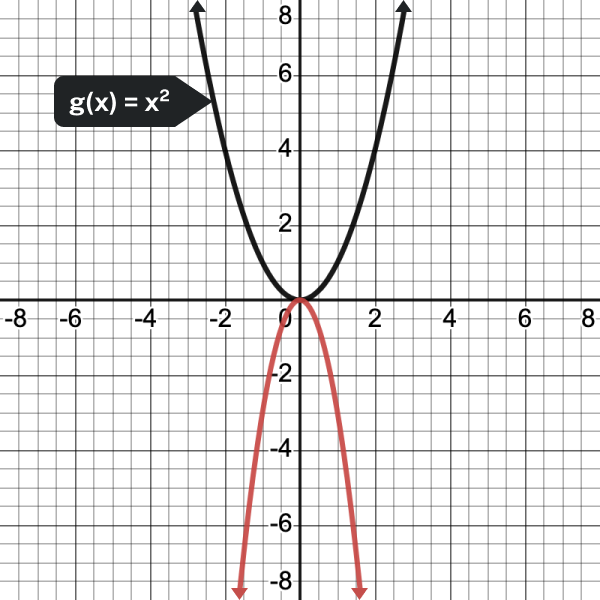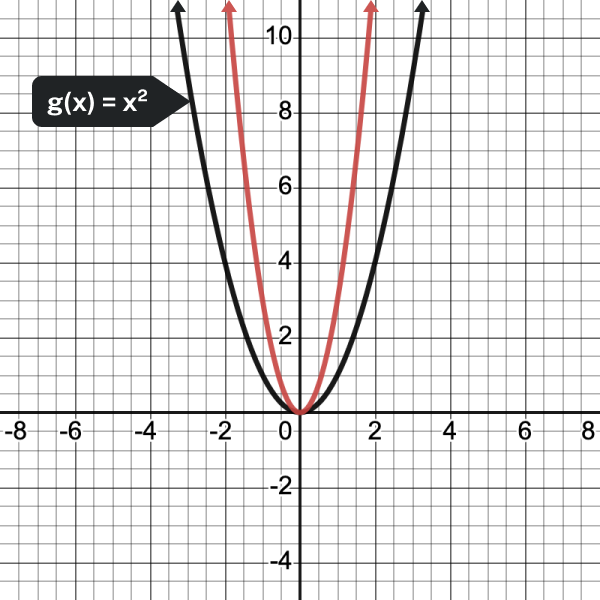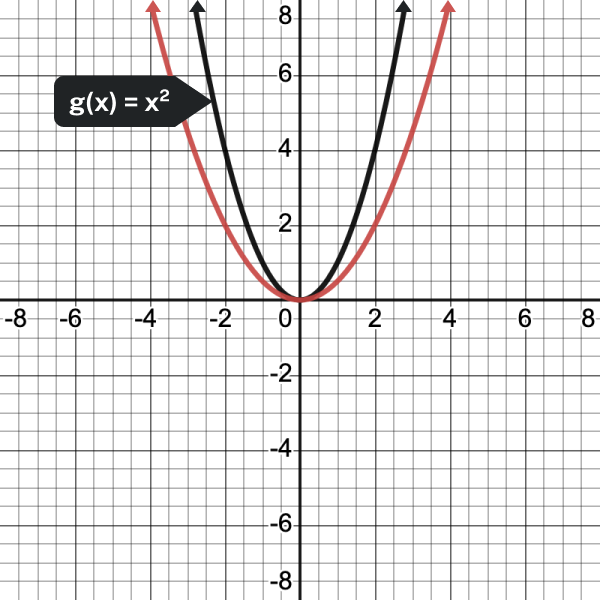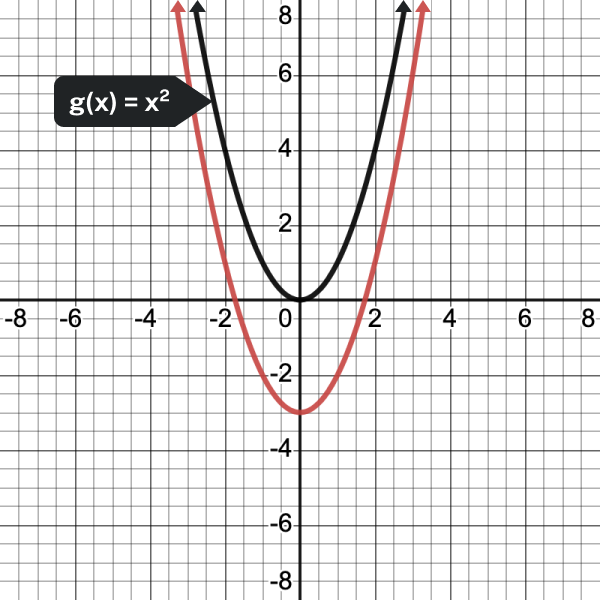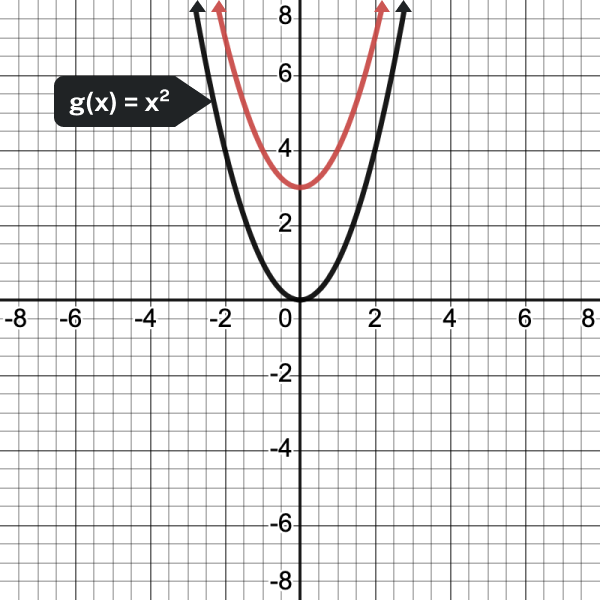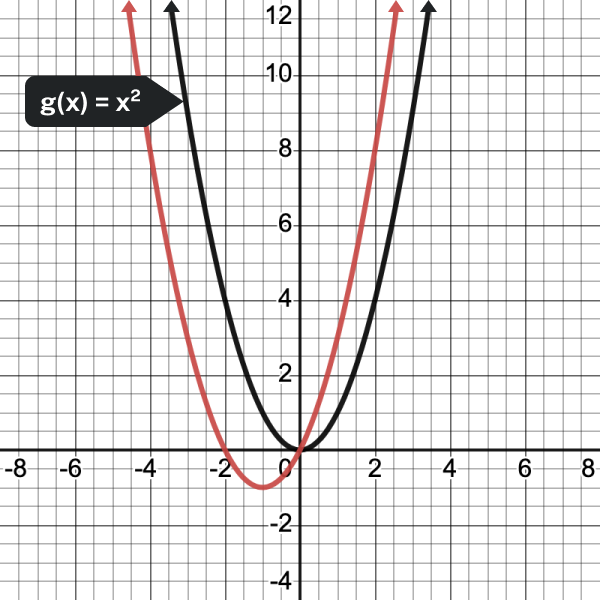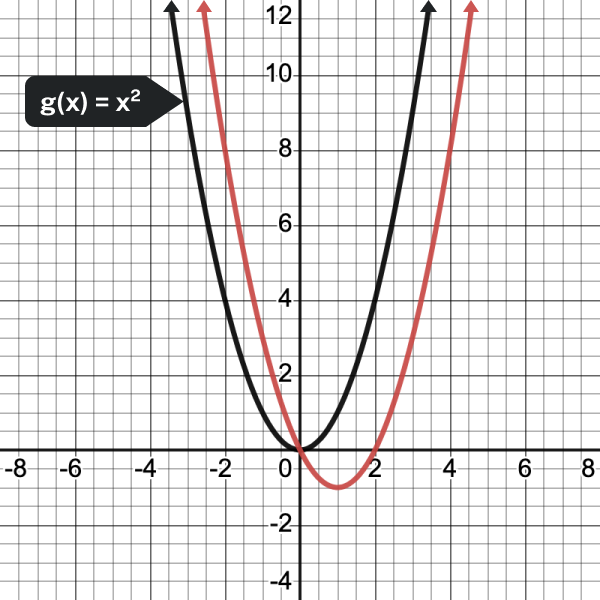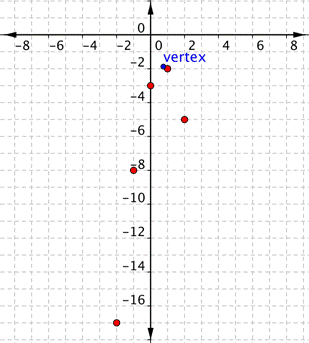Transformations of Quadratic Functions General form
Often times when given quadratic functions they will be in the general form, [latex]f(x)=ax^2+bx+c[/latex] where [latex]a \ne 0[/latex].
How Changing [latex]a[/latex] Impacts the Graph of a Parabola
Changing [latex]a[/latex] affects the width of the parabola and whether it opens up ([latex]a>0[/latex]) or down ([latex]a<0[/latex]).
changing [latex]a[/latex] of a parabola
Changing [latex]a[/latex] changes the width of the parabola.
- Width of the parabola:
- When [latex]|a| > 1[/latex], the parabola becomes narrower (steeper)
- When [latex]0 < |a| < 1[/latex], the parabola becomes wider (flatter)
- The larger the absolute value of [latex]a[/latex], the narrower the parabola
- Direction of opening:
- If a [latex]> 0[/latex], the parabola opens upward (U-shaped)
- If [latex]a < 0[/latex], the parabola opens downward (inverted U-shape)
- Stretching and compressing:
- Multiplying ‘[latex]a[/latex]‘ by a factor stretches the graph vertically by that factor
- Dividing ‘[latex]a[/latex]‘ by a factor compresses the graph vertically by that factor
In the following example, we show how changing the value of [latex]a[/latex] will affect the graph of the function.
- [latex]\displaystyle f(x)=3{{x}^{2}}[/latex]
- [latex]\displaystyle f(x)=-3{{x}^{2}}[/latex]
- [latex]\displaystyle f(x)=\frac{1}{2}{{x}^{2}}[/latex]
How Changing [latex]c[/latex] Impacts the Graph of a Parabola
Changing [latex]c[/latex] affects the vertical position of the entire parabola.
changing [latex]c[/latex] of a parabola
Changing [latex]c[/latex] moves the parabola up or down so that the [latex]y[/latex] intercept is ([latex]0, c[/latex]).
- [latex]c[/latex] represents the [latex]y[/latex]-intercept of the parabola
- Positive [latex]c[/latex] shifts the parabola up
- Negative c shifts the parabola down
- The magnitude of c determines the amount of vertical shift
In the next example, we show how changes to [latex]c[/latex] affect the graph of the function.
- [latex]\displaystyle f(x)={{x}^{2}}+3[/latex]
- [latex]\displaystyle f(x)={{x}^{2}}-3[/latex]
How Changing [latex]b[/latex] Impacts the Graph of a Parabola
Changing [latex]b[/latex] moves the line of reflection, which is the vertical line that passes through the vertex ( the high or low point) of the parabola. It may help to know how to calculate the vertex of a parabola to understand how changing the value of [latex]b[/latex] in a function will change its graph.
changing [latex]b[/latex] of a parabola
Changing [latex]b[/latex] affects the horizontal position of the vertex and the axis of symmetry of the parabola.
- Axis of symmetry:
- The axis of symmetry is given by [latex]x=\dfrac{-b}{2a}[/latex]
- Changing [latex]b[/latex] shifts this axis left or right
- A positive [latex]b[/latex] shifts the vertex left of the y-axis
- A negative [latex]b[/latex] shifts the vertex right of the y-axis
- The larger the absolute value of [latex]b[/latex], the greater the shift
For example, if the function being considered is [latex]f(x)=2x^2-3x+4[/latex], to find the vertex, first calculate [latex]\Large\frac{-b}{2a}[/latex].
[latex]\\[/latex]
[latex]a = 2[/latex], and [latex]b = -3[/latex], therefore,
This is the [latex]x[/latex] value of the vertex.
[latex]\\[/latex]
Now evaluate the function at [latex]x =\Large\frac{3}{4}[/latex] to get the corresponding [latex]y[/latex]-value for the vertex.
The vertex is at the point [latex]\left(\dfrac{3}{4},\dfrac{23}{8}\right)[/latex]. This means that the vertical line of reflection passes through this point as well.
In the next example, we show how changing [latex]b[/latex] can change the graph of the quadratic function.
- [latex]\displaystyle f(x)={{x}^{2}}+2x[/latex]
- [latex]\displaystyle f(x)={{x}^{2}}-2x[/latex]
